27 F. high on Tuesday in the Twin Cities.
26 F. average high on December 18.
47 F. high on December 18, 2011.
1" snow on the ground (at MSP International Airport).
14" snow on the ground on December 19, 2010 in the metro area.
As Dry as '88?
It's counterinuitive: there's snow on the
ground. It rained Saturday. How can we still be in a severe/extreme
drought? The ground is frozen - most of the water in any subsequent snow
will run off before soaking into topsoil.
Nationwide, it's being called the worst drought
since 1956. According to State Climatologist Greg Spoden our current
Minnesota drought is the worst in 6 years, statewide. Monday he sent me
an e-mail that made me sit up a little straighter:
"Without abundant 2013 spring rains, the
intensity and spatial extent of Minnesota's drought will become similar
to, or surpass, the drought conditions of the late 1980s."
1988 brought record heat and drought to Minnesota and much of America.
With any luck we'll see heavy snow (and rain) in
late winter and spring, and conditions will improve. That's my hope,
not a prediction.
Iowa and southern Wisconsin will pick up 4-8
inches by Thursday; no new snow here at home into Christmas Eve. The
maps are look more interesting for the middle of next week. A massive
storm spins up, and we may see a few inches of fresh powder on Christmas
Day.
It's too early to speculate about amounts - but
one thing is apparent: the first shot of numbing subzero air arrives by
New Year's Day.
Great timing!
Image above: USGS
Southerly Detour. WSI's 12 km. RPM model prints out
some 5-10" amounts from Nebraska and Iowa into the southern half of
Wisconsin and parts of Michigan - the best chance of a foot of snow east
of Waterloo, Iowa.
Close Call. The 12z Tuesday run of the ECMWF
(European) model shows a storm west of Peoria Thursday morning, the
heaviest snow bands from eastern Iowa into southern and central
Wisconsin. Some accumulating snow may brush far southeastern Minnesota, a
few hours of light snow possible in the Twin Cities. If you're driving
east on I-94 or south on I-35 conditions will become worse the farther
south/east you go Wednesday night into Thursday. Map above: WSI.
Christmas Day. The ECMWF (WSI) shows a significant
storm winding up near Chicago by midday next Tuesday; strong to severe
thunderstorms over the southeast (wouldn't be surprised to see a few
large tornadoes south of Atlanta), with moisture wrapping into the cold
air, steady snow pushing into southern and central Minnesota. A few
inches on Christmas Day? Too early to say - but I wouldn't be surprised.
Subzero Chill on New Year's Day? The latest GFS run
doesn't look quite as cold, but there's little doubt we'll be shivering
through the first couple of days of 2013. Models print out a couple
inches of snow from December 27-28.
Drought Update. Here is an excerpt of an e-mail I received from Minnesota State Climatologist Greg Spoden on Monday: "
Regarding
our present drought in historical context...the last time that this
much of Minnesota's landscape was categorized as undergoing Extreme
Drought was during the autumn of 2006 through early spring 2007. In that
interval, roughly 40 percent of the state was in the Extreme Drought
category. That drought impacted northern Minnesota. The Twin Cities, and
most of the state's primary agricultural regions, were very dry during
the fall and winter, but not to the same extent as Minnesota's
forested areas."
"Without abundant 2013 spring rains, the intensity and
spatial extent of Minnesota's drought will become similar to, or
surpass, the drought conditions of the late 1980s."
* more on the
Drought of 1988 from
Wikipedia: "
The
Drought of 1988 became the worst drought since the Dust Bowl 50 years
before in the United States; 2008 estimates put damages from the
drought somewhere between $80 billion and almost $120 billion in damage
(2008 USD). The state of Minnesota alone saw approximately 1.2 billion dollars in crop losses. The Drought of 1988 was so devastating that in later years it was compared against Hurricane Andrew in 1992 and against Hurricane Katrina,[4][5]
being the costliest of the three events. The Drought of 1988
qualifies being the costliest natural disaster in the history of the
United States. In Canada, drought-related losses added up to about 1.8
billion [1988] dollars."
Warning About Storm Surges Are Essential: Editorial. Here is part of an Op-Ed at
nola.com in New Orleans: "...
Three years after it dropped surge from the numerical categories used for hurricanes, the National Hurricane Center is inching closer to a separate warning
for floodwaters as part of a storm system. It is urgently needed.
Center officials say that the full warning system won't be ready until
2015, but they should look for any way possible to speed up that time
line. In the meantime, a color-coded map that indicates how much water
is expected in different areas along the coast needs to be ready for
use during the 2013 hurricane season. But Hurricane Center officials
are not committing to that. They say the map may be ready next year or
in 2014. Another hurricane season is really too long for vulnerable
communities to wait. The maps ought to be available for the 2013
season, and Congress should give the Hurricane Center the resources to
make that possible..."
Photo credit above: "
A New York Police Department van
drives along a street soaked with rain and covered with debris in a
Rockaway neighborhood of the borough of Queens as a nor'easter
aggravates already bad conditions in the wake of Superstorm Sandy."
(Photo by AP Photo/Craig Ruttle)
A Surreal Sight. A rainbow formed over the Jet Star roller coaster,
or what's left of it, on Tuesday in Seaside Heights, New Jersey. The
area was hit very hard by Sandy in late October. Photo from Casino
Pier's Facebook page.
Severe Weather And The Grid. All I want for
Christmas is an electrical generator. America's power grid is
increasingly vulnerable to a new generation of super-sized storms,
hurricanes, tornadoes and derechos, as described in this article from
IEEE Spectrum: "
Uncannily,
in a report on "Extreme Weather and Grid Disruptions" that was issued
in May and updated on Aug. 30, Evan Mills of Lawrence Berkeley
Laboratory cited risk manager estimates that a severe Northeast U.S hurricane could result in total costs of $76.4 billion,
uninsured costs of $45.1 billion, and 85 fatalities. Those
projections are right in line with current estimates of the total
costs and fatalities from the perfect storm dubbed "frankenstorm," the
combined hurricane and Nor'easter that devastated cities and
communities in the U.S.Northeast at the end of October. According to
ten-year-old estimates from the Electric Power Research Institute,
displayed by Evans in his report, annual costs to the U.S. power grid
from severe weather average $104-164 billion..."
These Freak Waves Can Attack Anytime Without Warning. Just when I was about ready to head back into the water, along comes this story from
Business Insider - here's the introduction: "
A
freak wave killed seven people in Chicago on a sunny day on the shore
of Lake Michigan nearly 60 years ago. At the time, no one knew what set
off the monster wave. Researchers now know the wave was a
pressure-driven tsunami, stirred up by storms passing earlier in the
day, said Chin Wu, an engineering professor at the University of
Wisconsin, Madison, at last week's annual meeting of the American
Geophysical Union. Called meteotsunamis, the weather-related waves
strike frequently in the Great Lakes and along the U.S. coastline.
The 10-foot-high (3 meter) wall of water that hit Chicago was one of
two recorded in Lake Michigan in June 1954..."
Deadly Caribbean Tsunami Overlooked. Now I really don't want to go in the water. Remind me to stick to Minnesota's cool (quiet) lakes.
Yahoo News has the story; here's a clip: "
Deadly tsunamis threaten Puerto Rico, the Virgin Islands and the rest of the Caribbean and are an overlooked hazard in the region, geologists reported at the annual meeting of the American Geophysical Union here last week. The Caribbean's beautiful tropical islands and coral reefs are strung along the junction of several major and minor tectonic plates.
Many sit above a subduction zone, where two plates meet and one
slides protestingly under the other, down into Earth's mantle. Other
islands, like Haiti, straddle strike-slip faults, where plates slide
side by side. The last decade's devastating earthquakes in Haiti and Sumatra
have brought increased attention to the Caribbean, and scientists at
the meeting compared the setting to that of Sumatra, Indonesia, both
for its complexity and the risk of tsunamis and giant earthquakes..."
Graphic credit above: "
Tsunami source locations in the
Caribbean Sea. The symbols indicate the cause of the tsunami: Brown
Square is a landslide, Red Triangle is a volcanic eruption, Question
Mark is an unknown cause, and White Circle is an earthquake."
New U.S. Commission Would Try To Improve Weather Forecasting.
Are we losing our meteorological sensing/prediction edge to the
Europeans? There's a fair amount of angst and paranoia lurking out
there.
Scientific American has a blog post focused on steps being taken to help the USA maintain it's weather-edge; here's an excerpt: "
Despite the ever-present caveat that predicting the weather
is a difficult and inexact science, it seems that forecasts have been
getting better and better. Yet some leaders in meteorology say
continued improvement is not guaranteed and could even be jeopardized
by federal spending cuts. They want Congress to fund a high-level,
national commission that would ensure that ongoing research is pursued
to protect the nation against weather threats. As recent storms
have demonstrated, individuals, towns, industries such as agriculture
and the U.S. economy itself are always vulnerable to bad weather,
from hurricanes to droughts. Advanced technologies have made
forecasting more accurate and have provided earlier warnings of impending storms, yet room for enhancement still exists..."
New (Higher Resolution) Satellites Show Earth At Night.
Satnews.com has a fascinating, visual story; here's an excerpt: "
A
series of new views of the Earth at Night. It was not the first time
such maps have been created, but the difference between the old view
and the new is as clear as the difference between the two images above.
On November 12, 2012, the Visible Infrared Imaging Radiometer Suite (VIIRS) on the Suomi NPP
satellite captured the top image of city, village, and highway lights
near Delhi, India. For comparison, the lower image shows the same area
one night earlier, as observed by the Operational Line Scan (OLS) system on a Defense Meteorological Satellite Program (DMSP)
spacecraft. Since the 1960s, the U.S. Air Force has operated DMSP
satellites in order to observe clouds and other weather variables in
key wavelengths of infrared and visible light. Since 1972, the DMSP
satellites have included the OLS, which gives weather forecasters some
ability to see in the dark. It has been a highly successful sensor,
but it is dependent on older technology with lower resolution than
most scientists would like. For many years, DMSP data were classified..."
Image credit above: "
NASA Earth
Observatory image by Jesse Allen and Robert Simmon, using Suomi NPP
VIIRS and DMSP OLS data provided courtesy of Chris Elvidge (NOAA
National Geophysical Data Center). Suomi NPP is the result of a
partnership between NASA, NOAA, and the Department of Defense." Caption by Mike Carlowicz.
The Chemistry Of Snowflakes. Here's an interesting, enlightening video from
The American Chemical Society: "
The
video tracks formation of snowflakes from their origins in bits of
dust in clouds that become droplets of water falling to Earth. When the
droplets cool, six crystal faces form because water molecules bond in
hexagonal networks when they freeze. It explains that ice crystals
grow fastest at the corners between the faces, fostering development
of the six branches that exist in most snowflakes. As snowflakes
continue to develop, the branches can spread, grow long and pointy, or
branch off into new arms. As each snowflake rises and falls through
warmer and cooler air, it thus develops its own distinctive shape." Photo: Star Tribune.
The Future Of Television Has Arrived. It's Called The iPad. Here's a clip of an article that caught my eye at
The Verge: "
The
future of the television is the iPad. That was the overwhelming
message at the TV of Tomorrow conference in New York, which saw
executives and decision makers from across the television industry
gather for a lively day of discussion and debate about the state and
direction of their business. And almost all of that discussion
revolved around the iPad, which has become interchangeably known as
the "second screen." Apple may call its TV efforts a "hobby," but the
TV industry is already making huge bets on iOS. Tablet users were a
dominant theme of the conference, which featured sessions titled
"Measuring the Multiplatform Viewer" and "Second-Screen Content: Have
We Created A Monster?" Barry Frey, a former Cablevision executive,
opened a panel called "TV's New Gateway" by asking "How many of you
are taking notes on the second screen?" A room full of suits waved
their iPads in the air. "The experience of television is moving off the
primary screen," said Dale Herigstad, chief interaction officer at
design firm Possible..."
Can Your Tablet Do This? A friend sent me this
YouTube clip.
It's in German, and my German only kicks in after the third glass of
fine Octoberfest beer, so we won't go there. Thankfully the video tells
the tale. I'm not sure, but I suspect it's....magic.
Seasonably Chilly. Under a gray, murky sky highs
were a few degrees above average, statewide, ranging from 21 at
International Falls to 23 St. Cloud, 27 Twin Cities and 32 Grand Marais.
Snowcover is still sparse, ranging from 6" at International Falls to 5"
St. Cloud, 3" Duluth and a paltry inch in the Twin Cities.
Paul's Conservation Minnesota Outlook for the Twin Cities and all of Minnesota
TODAY: Mostly cloudy. A "Minnesota warm front". Winds: W 5-10. High: 31
WEDNESDAY NIGHT: Cloudy with flurries possible. Steadier snow southeastern MN. Low: 18
THURSDAY: Gusty and colder with flurries.
Steadier snow over Wisconsin, Iowa and southeastern MN. Winds: NW 15-30
(wind chills may dip below zero). High: 20
FRIDAY: Chilled sunlight returns. Winds ease up a bit. Low: 3. High: 21
SATURDAY: Mix of clouds and sun, quiet. Low: 7. High: 26
SUNDAY: Patchy clouds, a bit colder. Good travel weather. Low: 9. High: near 20
CHRISTMAS EVE:: Tracking Santa. Clouds increase during the day. Low: 11. High: 22
CHRISTMAS DAY: A period of accumulating snow for Christmas? Stay tuned. Low: 14. High: 25
Climate Stories...
Four Steps Toward A Climate-Friendly Diet.
Markeplace has the story (and audio clip); here's an excerpt: "
One
of the biggest contributors to global warming is the food-supply
system, from the fertilizer and gas used to cultivate farms to
transportation and storage to what we throw away at the end of a meal.
We won’t stop climate change through individual action alone, but
together, we can make a real difference. Here are four simple things we
can do in changing the way we consume:
1. Eat less meat and dairy, especially beef and
lamb. Livestock are by far the biggest producers of greenhouse gases
in the global food system. In the U.S., most livestock-related
emissions come from the animals’ digestive systems and from the
fertilizer used to grow their feed. If an American family of four ate
no meat or cheese one day a week, it would be like taking a car off
the road for five weeks a year, according to estimates by the Environmental Working Group. If we all did it, it would be like not driving 91 billion miles..."
Global Warming: Eastern U.S. To See More Heatwaves, Rain. Here's an excerpt of a story at
The Summit County Citizens Voice: "
As
climate models become more sophisticated, researchers have started to
fine-tune global warming impacts to the regional level, including more
drought and water shortages expected in the Southwest, seasonal
ice-free conditions in the Arctic, and hotter, wetter conditions in
the Eastern U.S., according to a new University of Tennessee study...."
Image credit above: "
University of Tennessee researchers
say the eastern U.S. can expect more heatwaves and increased
precipitation in a warming world." Image courtesy NASA.
Climate Change Is Killing Economy: Here's How To Stop it. Not my words, but a story at
CNBC.com; here's an excerpt: "
Congress
this week is considering a $60 billion bill to pay for damages
inflicted by Superstorm Sandy across three Northeastern states in late
October. Though some Republican congressional members are balking at
the sum, which the White House is requesting, New York, New Jersey and
Connecticut say the damage is even greater, closer to $82 billion. In
either case, these sums are nothing compared to the long-term price
the U.S. will pay as a result of extreme weather caused by climate
change, says Michael Hanemann, an economics professor specializing in
climate change at Arizona State University. "What we're going to
experience is unprecedented in human history in terms of the type of
climate we're creating for ourselves," Hanemann tells The Daily
Ticker. "The rate of warming has increased maybe five times what it
was in the early part of the 20th century. The earth is getting warmer
faster..."
10 Places Climate Change Kills The Most People. This is one list no country wants to be on (China is #1)
Marketwatch.com has the story - here's a clip: "
Global
climate change and pollution from the use of fossil fuels killed
nearly 5 million people around the world in 2010, according to a report
released earlier this year by climate change advocacy group DARA. By
2030, this figure will rise to nearly 6 million deaths, the group’s
second annual climate vulnerability monitor estimates. Total global
costs, which were estimated at more than $600 billion in 2010, are
expected to rise to $4.35 trillion by 2030..."

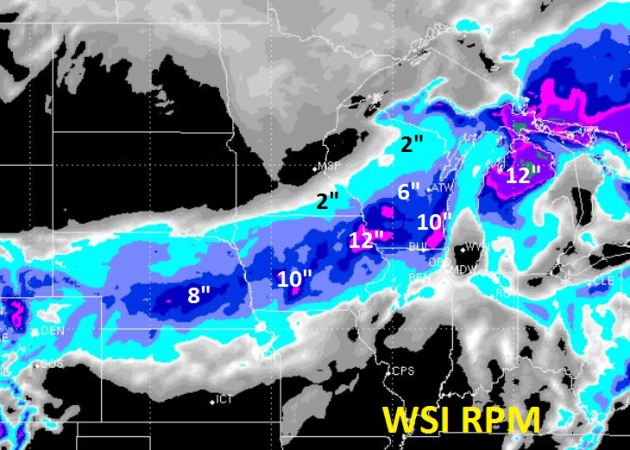

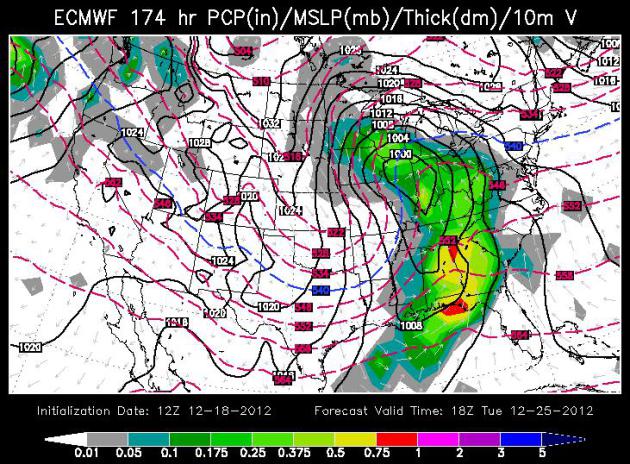
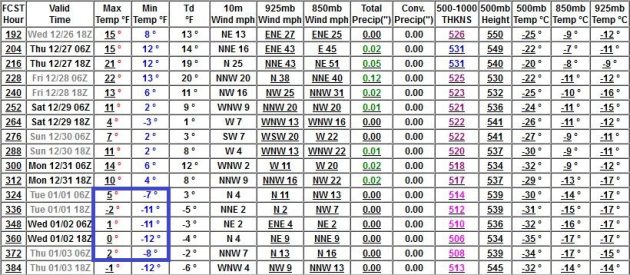
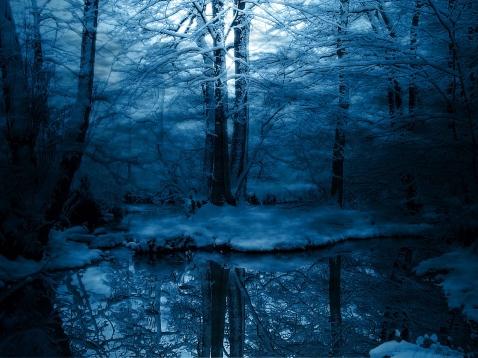
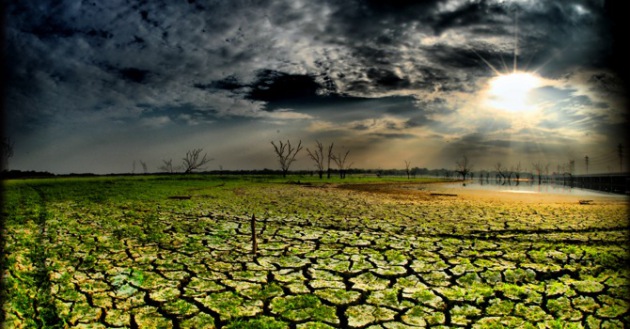

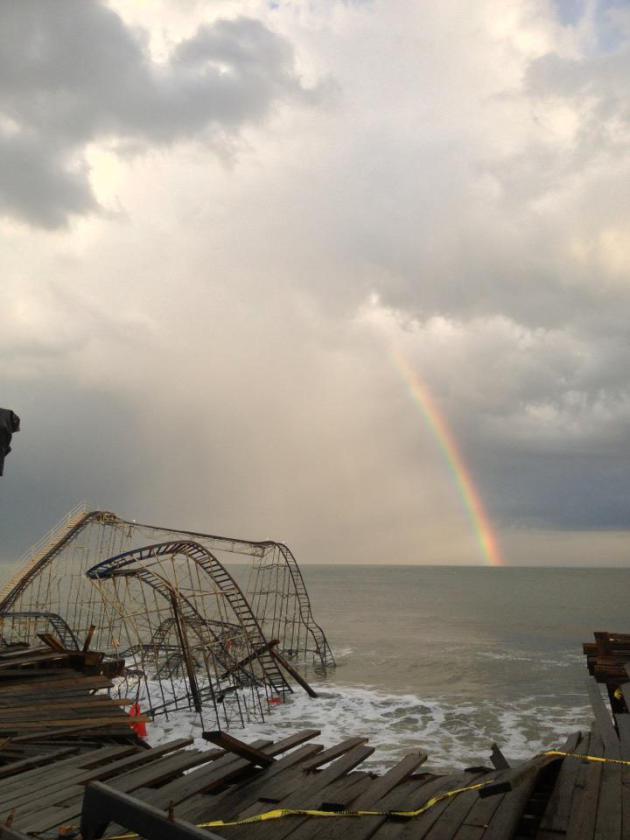




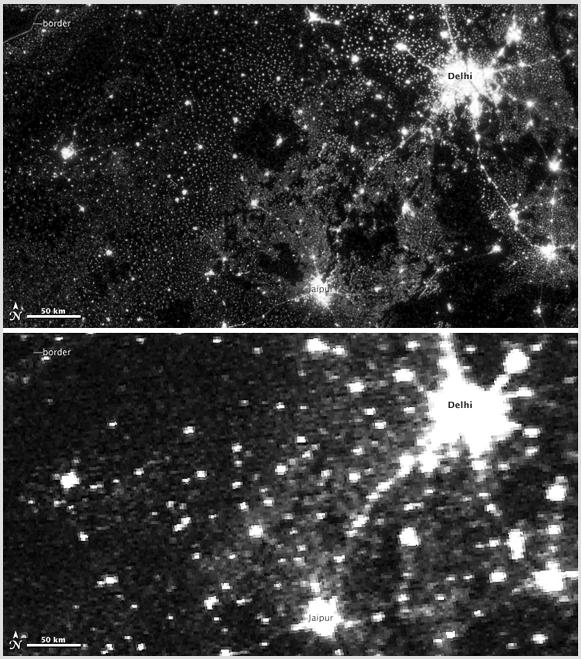












No comments:
Post a Comment